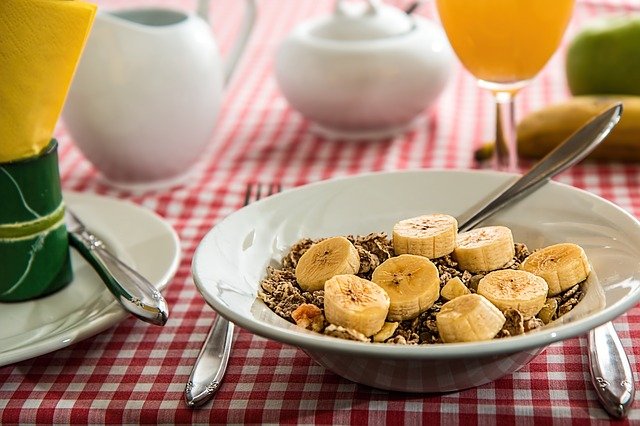
Yes, pizza and beer are in practically every college student’s diet. But you’d do well to counteract those substances with healthful eating throughout the week. You can follow these easy tweaks to improve your nutrition and save money, too. Eating healthy on a college budget is possible!
Drink More Water
Сhoose water more often than other beverages, such as sodas and fruit juices. In most municipalities, tap water tastes fine and is safe to drink. Plus it’s cheaper and produces less waste than bottled water.
Soda has absolutely no nutritional benefit whatsoever. While fruit juice seems healthful, it’s full of sugar, plus you get none of the fiber from the original fruit. Water is inexpensive and benefits your body. If you need something that tastes better, try these instead:
- Hot herbal tea
- Fruit juice cut with club soda or seltzer
- Flavor drops (in either sparkling or flat water)
Choose Healthful Snacks
Vending machines eat your money and often don’t have much to offer in return. You’ll save money and get better nutrition by stocking up on snacks a few times a semester. Keep some of the following in your room:
- Nuts
- Seeds
- Protein bars
- Rice cakes
- Pretzels
And stash a few things in the kitchen fridge or freezer if you don’t have one in your room :
- Frozen fruit bars
- Dried fruit
- Fresh fruit
- Raw veggies
- Yogurt
Counteract Sodium Intake
Many of the foods that students have access to and prefer are high in sodium. But many people don’t realize that they can balance excess sodium by eating more potassium. When you do find yourself in the dining hall or a real (not fast-food) restaurant, choose at least one of the following high-potassium foods:
- Broccoli
- Carrots
- Kale
- Kiwis
- Mangoes
- Melon (cantaloupe or honeydew)
- Papaya
- Pears
- Potatoes
- Seafood
- Squash
- Spinach
- Tomatoes
- Yogurt
Also, keep some raisins or prunes in your room, and try to eat a banana and an orange every day. (Opt for a small glass of orange juice if you’re in a rush.)
Don’t Fear Fat
In the ’80s and ’90s, people were urged to cut fat from their diet. Ironically, that’s when obesity began to reach epidemic proportions. If your parents grew up in these decades, they may have passed their learning on to you with the best of intentions.
Now, fat is losing its bad name. The key is to avoid unhealthy fats: namely, trans fats or hydrogenated oils. These are clearly marked on food labels. So skip the low-fat foods and eat the real thing. Fat makes food taste better, so you’re likely to eat less before you’re satisfied. However, that doesn’t mean you have carte blanche to eat fries and cheesecakes every day. The healthiest types of fat come from:
- Fish
- Eggs
- Dairy products
- Nuts
- Seeds
- Avocados
- Olive oil
Moderation is always key.
Take Some Supplements
Some people definitely overdo it with supplements. Pills are no substitute for real food. But they can help fill in the gaps when you aren’t always eating perfectly balanced meals. Simply find a good basic multivitamin/multimineral supplement. Then add one or two other nutrients that you know are lacking in your diet, you tend to be deficient in, or you want to boost in your system. Common examples include:
- Extra vitamin C (if you’re prone to colds and other infections)
- Fish oil (or omega-3 fatty acids from vegetarian sources)
- Extra calcium
- Iron (if you’re a woman and it’s not already in your multivitamin or contraceptive pills)
Make Simple Meals
Ignore the fad diet of the day and go for an almost-equal proportion of protein, fat, and carbohydrate. Make a list of meals that you like, so you’ll be more likely to make wise choices the next time you’re starving. Use this list to generate ideas:
- Scrambled eggs or omelet with cheese and chopped veggies
- French toast with fruit
- English muffin or pita pizzas: cheese plus sliced or chopped veggies
- Tuna salad with celery and onion (sandwich, wrap, or pita)
- Macaroni and cheese mixed with peas, corn, and browned ground beef or canned chicken
A well-balanced diet doesn’t need to be complicated or expensive. This article, while detailed, can be distilled into several very basic concepts. Follow them, and you’ll be heading down the road toward lifelong health and well-being.
